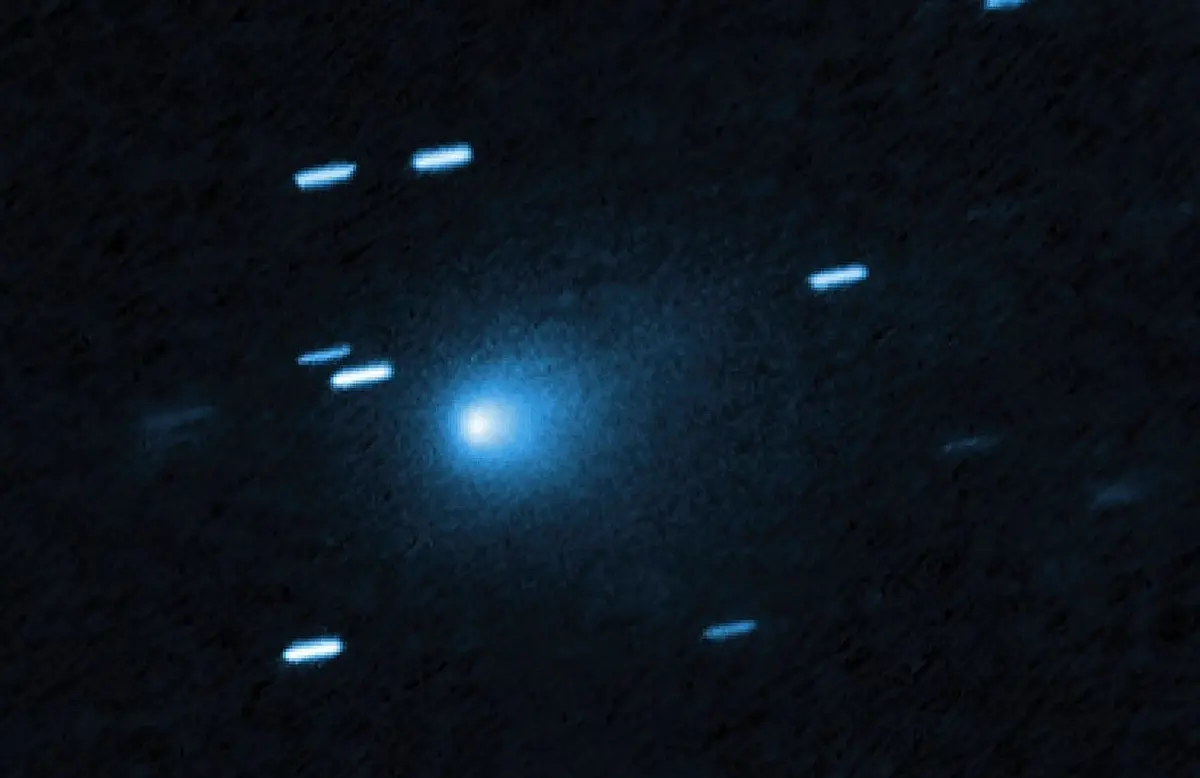ESA improves trajectory predictions of Interstellar Comet 3I/ATLAS using Mars orbiter data
Observation from Mars provides new trajectory data
Until September 2025, predictions for 3I/ATLAS relied exclusively on Earth-based telescopes.
Between 1 and 7 October, ESA’s ExoMars TGO directed its instruments toward the comet as it passed approximately 29 million kilometers from Mars on 3 October.
This proximity allowed the probe to observe the comet at about ten times the distance compared with Earth-based telescopes.
Combining the Mars-based observations with data from Earth reduced uncertainty in the comet’s position, producing a tenfold increase in accuracy, according to Space Daily.
The comet is moving through the Solar System at speeds up to 250,000 kilometers per hour and is expected to leave the Solar System without returning.
The combination of Earth and Mars perspectives enabled calculations that were previously not possible with observations from Earth alone.
Using ExoMars TGO data for trajectory refinement
The CaSSIS instrument on ExoMars TGO, typically used to image the Martian surface, was repurposed to track 3I/ATLAS across a background of stars.
ESA’s Near-Earth Object Coordination Centre integrated the spacecraft data into trajectory calculations, taking into account the probe’s orbit around Mars.
The resulting trajectory incorporated the unique location of TGO and required collaboration among flight dynamics, science, and instrument teams to account for the spacecraft’s position and movement with high precision, Space Daily reports.
These observations represent the first time astrometric measurements from a spacecraft orbiting another planet have been officially submitted and accepted into the Minor Planet Center database.
The MPC collects and standardizes observations from multiple sources, including telescopes, radar stations, and spacecraft, to maintain a central repository of asteroid and comet trajectories.
The integration of TGO measurements provides a benchmark for future interplanetary observations of small bodies.
Implications for planetary defence
Although 3I/ATLAS does not pose a risk to Earth, ESA regards the exercise as a test case for planetary defence. Triangulating data from different locations in space can improve the accuracy of orbit predictions for near-Earth objects.
Spacecraft in advantageous positions may provide measurements with reduced margins of error, contributing to future readiness in case of potentially hazardous objects, according to Space Daily.
ESA plans to continue monitoring the comet with the Jupiter Icy Moons Explorer (Juice) spacecraft. Juice will observe 3I/ATLAS following its closest approach to the Sun, with data expected by February 2026.
ESA is also preparing the Neomir mission to monitor regions obscured by the Sun from Earth-based detection.
In addition, the Comet Interceptor mission is intended to investigate a comet directly, potentially including an interstellar object, to expand understanding of cometary composition and dynamics.
These coordinated observation campaigns demonstrate ESA’s capability to integrate multi-spacecraft data for small body tracking.
Stay tuned for more updates.
